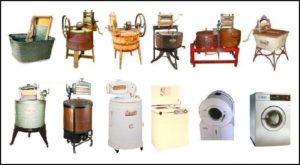 For the modern man automatic laundry washing machine is one of the most necessary devices in everyday life. Nowadays it is in every home, and people appreciate all the benefits of using it, since it is a huge saving of effort and time. But many people don’t know who invented the automatic washing machine. Previously, a woman had to spend most of her day in a depressing life. After all, washing mountains of laundry is not an easy task. Now the problem is solved with the help of equipment that can be purchased at any specialized store.
For the modern man automatic laundry washing machine is one of the most necessary devices in everyday life. Nowadays it is in every home, and people appreciate all the benefits of using it, since it is a huge saving of effort and time. But many people don’t know who invented the automatic washing machine. Previously, a woman had to spend most of her day in a depressing life. After all, washing mountains of laundry is not an easy task. Now the problem is solved with the help of equipment that can be purchased at any specialized store.
Where it all began
Background to the emergence of washing technology
Before the active development of scientific and technological progress washing methods were quite primitive. The name of the first inventor of the machine is still unknown, since applications for its registration were received regularly and in large quantities. The devices were not much like modern ones, but they could confidently be called prerequisites.
At the end of the 18th century, the washboard appeared, which served people for many years.It was widespread in Soviet times.

During these same years, the American Nathaniel Briggs invented the washing device. It was in the form of a wooden tub with a rotating frame. The high labor costs did not justify the purpose of the apparatus.
The appearance of the first washing machines
The patented device appeared in the mid-19th century. The world's first washing machine was created by American inventor James King. Outwardly she very much resembled modern device, despite the fact that it was manually driven.
From that time on, improvements in the washing process began to occur at an accelerated pace. Until 71 of the 19th century, there were about 2 thousand patents for devices in America. Many washing machines were not suitable for performing their basic functions. Their operation did not last long, since the reliability of the device left much to be desired.
One of the first laundries was opened by an inventor from California in 51 of the 19th century. He designed a machine that could wash 10-15 items at a time. No human labor was used to operate the device. It was harnessed to 10 mules. The Californian charged a certain amount for washing clothes and thereby earned his living.
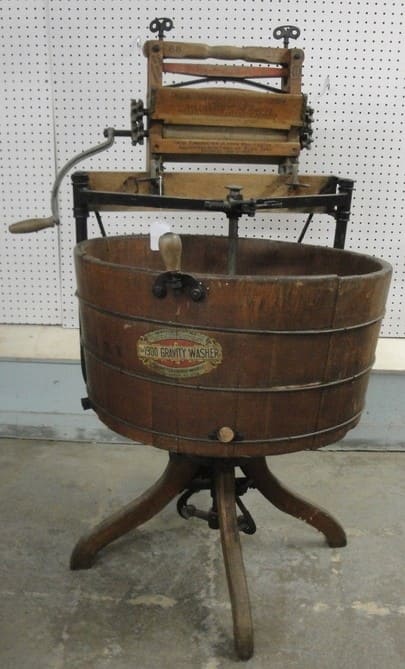
Launch of washing equipment into mass production
The first person to invent a washing machine and put it into mass production was William Blackstone. It was manually operated and sold for two and a half dollars per unit. The inventor gave the first constructed model to his wife on her birthday.The industrial enterprise founded by Blackstone continues to operate to this day.
Since the laundry needed to be spun after washing, and this procedure also required considerable effort, a device was invented that made it easy to get rid of excess water. It consisted of two rollers rotating towards each other. Wet laundry passed through them and was wrung out, while you had to turn the handle. Not long ago people stopped using this invention.
Washing appliances with motor
In Europe, washing machines began to appear at the beginning of the 20th century. The design began to use a motor, which initially worked using combustible fuel. But the gasoline-powered mechanism did not take root, since the smoke and smell emanating from it adversely affected the cleanliness and freshness of things.
Subsequently, the Germans improved production technology, which led to the emergence of the first electric washing machine. The creator of this device, called "Thor", is Alva Fischer. The structure was made of wood and looked like a drum. Washing was carried out with rotating movements eight times in each direction.
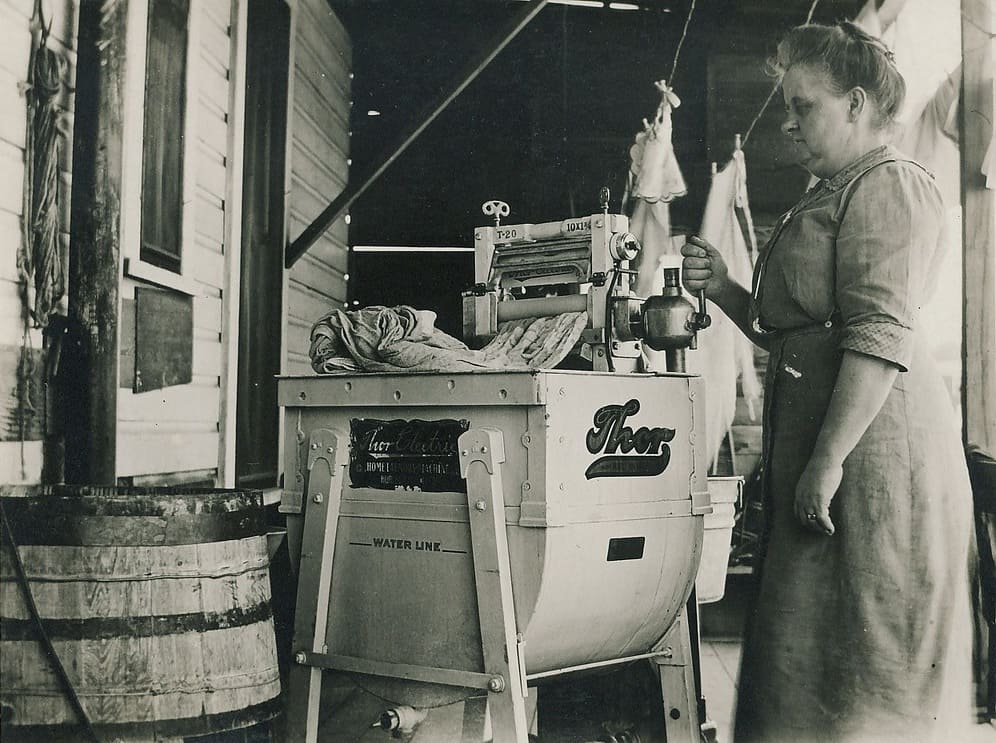
The path to automatic washing machines
Development process of modern washing machine
The development and improvement of the manufacturing process of washing devices in the 20th century led to a massive increase in production, of which there were more than 1,400 enterprises in America alone. The products were not particularly safe, since all parts of the mechanism were open. The devices directly performed only their basic functions.
The design of the washing machine radically changes what was little known at the time. whirlpool company. The company's hired specialists cover the device with plastic linings, reducing the noise level that occurs during operation. In addition, the product range comes in various color options. From an unsightly design, the device is transformed into an elegant piece of furniture.
Further, the technological development of a laundry washing machine is accompanied by an improvement in its aesthetic appearance. The devices that have appeared in homes lead to the closure of the majority of laundries due to the loss of customers. Mass layoffs of domestic staff begin. Using a washing machine at home displaces human manual labor.
Creating an automaton machine
In the middle of the 20th century, a device was created that was controlled using programs, the carriers of which were punched cards.
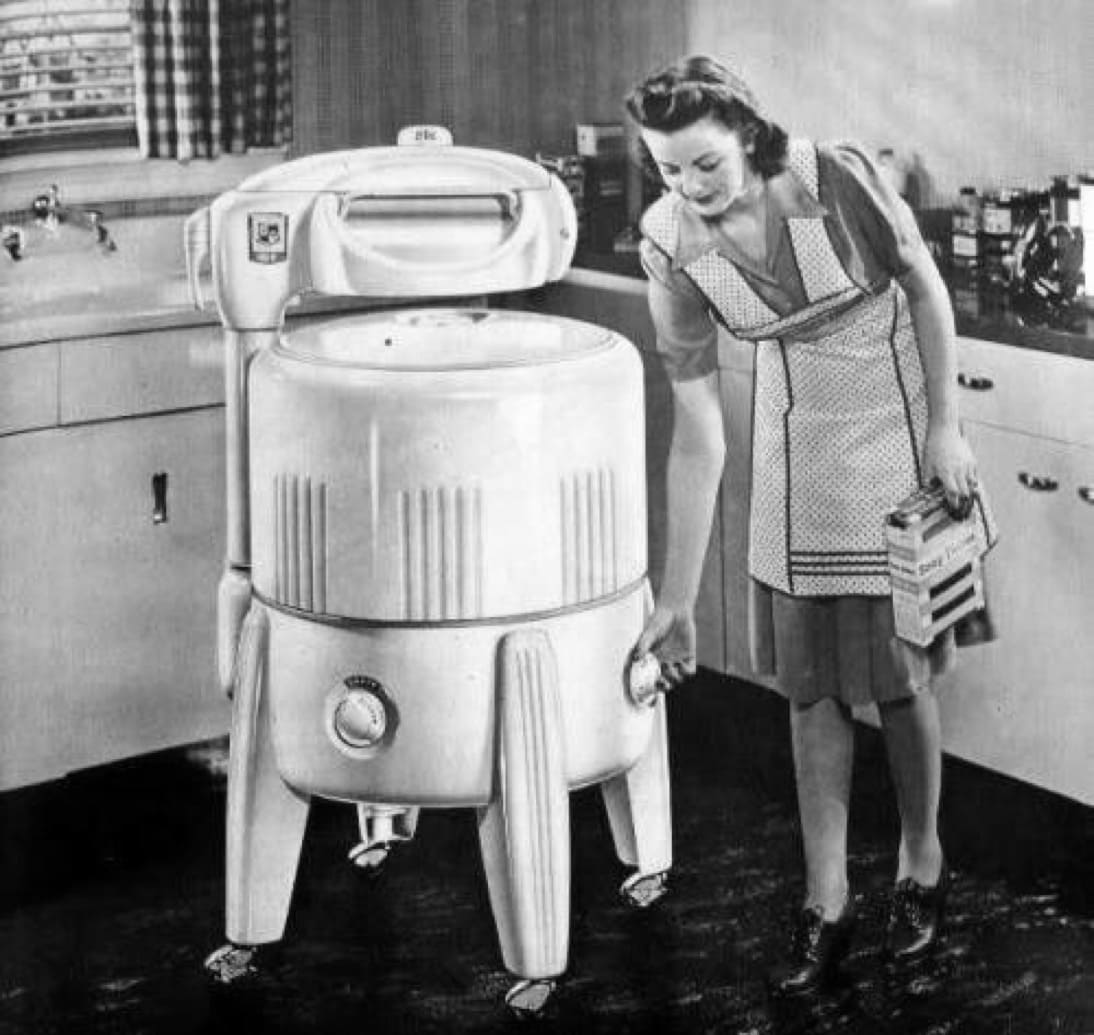
Devices could be washed according to the established program, significantly simplifying human work. Subsequently, automatic control was introduced into all components of the device, including spinning. This was a real breakthrough in the development of the production of washing equipment.
In the 70s, they already began to resemble the current automatic devices in their external shape. Gradually, laundry washing machines are acquiring new functionality. Mechanical controls are being replaced by electronics. The first machine with a processor is released.
The first Soviet washing equipment
In the USSR, the first device appeared in the 50s. It was an activator-type machine with vertical loading from a Riga manufacturer.The specimen was called “EAYA-2” and in appearance resembled a rocket stage. It had the function of washing, rinsing and spinning. Using a lever, modes were switched.
At a time when automatic washing machines were used all over the world, and this was 1966, the Vyatka unit appeared in the USSR. It looked like a barrel with a motor. Of the implemented technical characteristics, there was only a timer. It was necessary to fill the device with water and drain it manually.
After some time, the country began to produce semi-automatic devices for washing and spinning clothes, equipped with a centrifuge. She was like that model "Siberia". The washing mashine is known to many and has not been discontinued to this day.
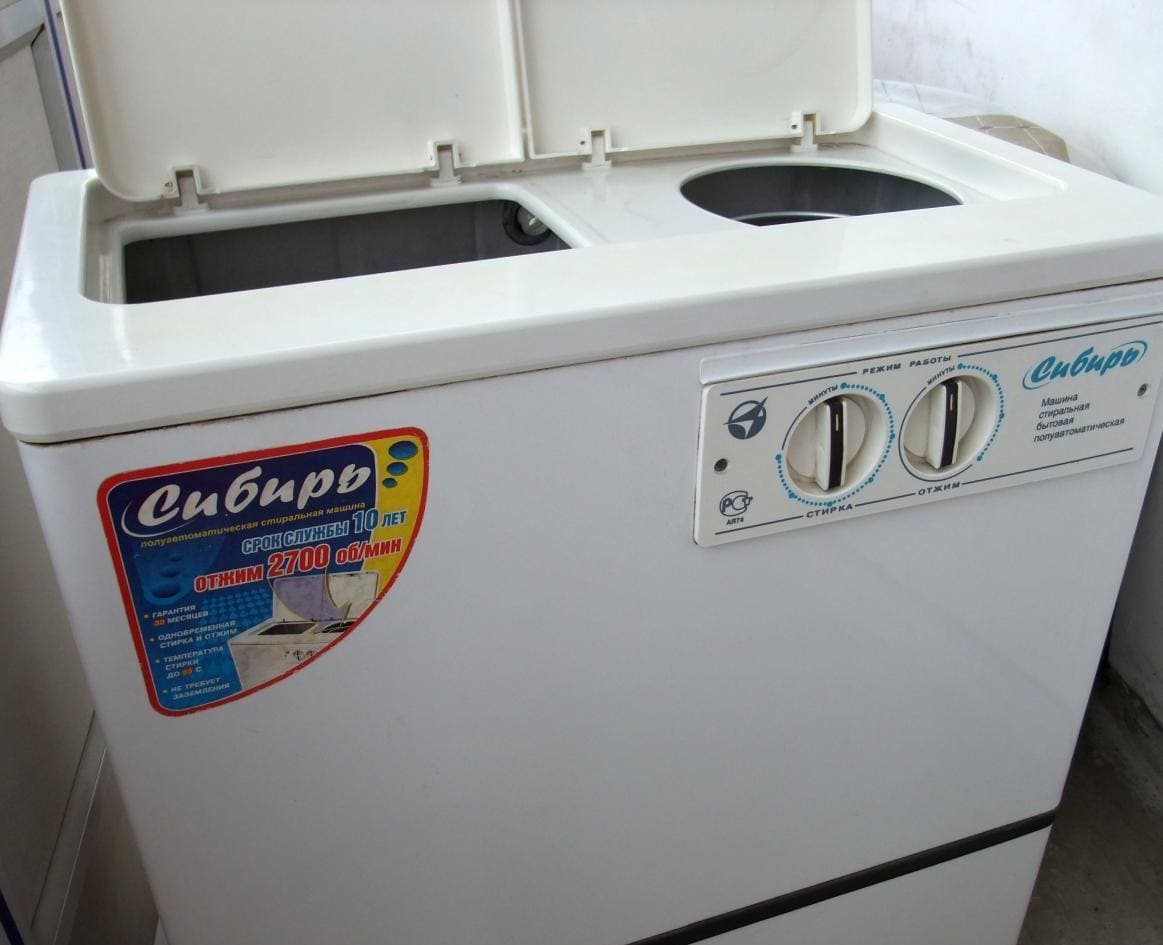
Automatic washing machines in the USSR
One of the first Soviet automatic models was the Volga-10 washing machine. It was produced by the plant named after V.I. Chapaev in the city of Cheboksary. The negative side of this device was its high power consumption. In connection with this, the model was discontinued, since in residential premises there was no provision for wiring of the required power, and it knocked out plugs when turned on.
The most successful model was the “Vyatka-automatic-12”, the launch of which began in 1981 by the machine-building plant of the city of Kirov. The manufacturing license was acquired from the Italian organization Merloni Eletrodostici (currently Indesit). It became the first Soviet washing machine equipped with easy-to-use programs.
It was equipped with a body that was modern for those times and parts from Italy. “Vyatka-automatic” was produced during the period of stagnation and its cost was quite high - four hundred rubles. In this regard, it never became a scarce commodity.
Modern automatic washing machines
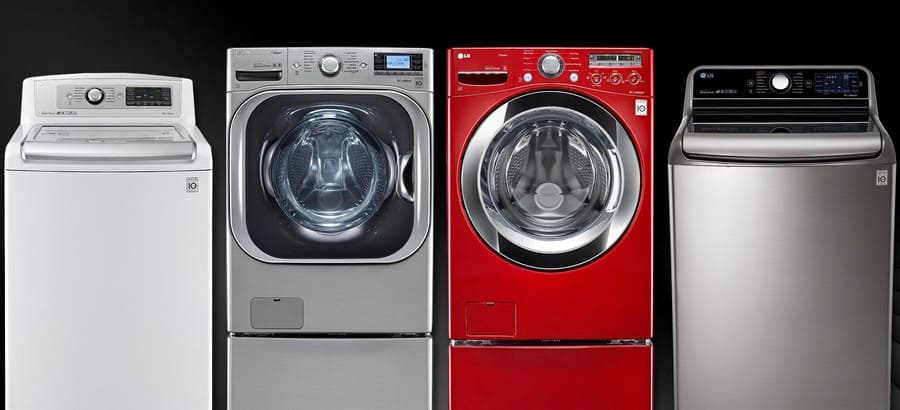
The history of the production of washing appliances and the improvement of their technology continues to the present day. New models are released regularly, and outdated devices are gradually becoming a thing of the past. Some advantages of a modern household appliance can be noted:
- economical energy consumption (manufacturers strive to ensure that the process of washing clothes consumes as little electricity as possible);
- reduction in noise level (compared to the first devices, some current models operate with virtually no sound);
- improving the quality of washing clothes (specialists are developing technologies that make it possible to improve the washing process without using a large dosage of powder);
- ease of control (starting the wash is easier, an Internet connection has appeared);
- dimensions (appliances can be built into furniture in the kitchen or have a reduced width for use in small rooms);
- stylish design (modern washing devices attract attention with their aesthetic properties and various color options).
Time goes by, gradually Washing machines are becoming intelligent and economical. They are able to wash various types of laundry, control its weight and powder consumption, and dry things. Some high-tech models themselves update the program via the Internet. Many people are grateful to the person who invented the washing machine. This type of household appliance remains a leader among consumers.






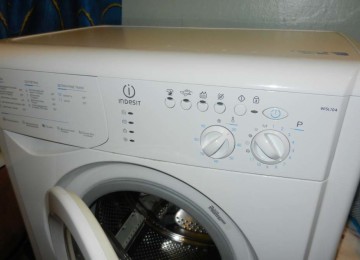
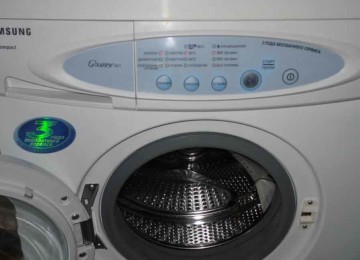
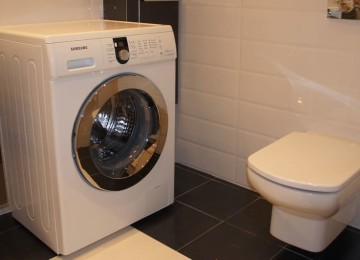
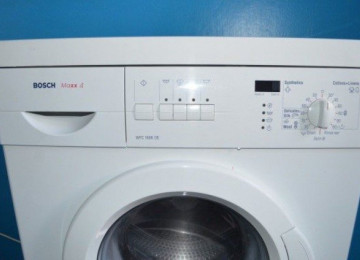
Give a Nobel Prize for an invention


